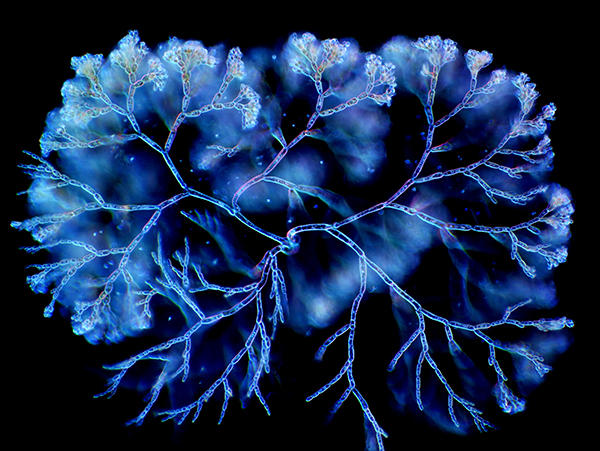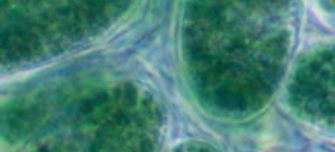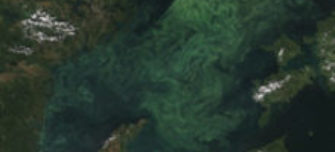Algae
Algae can exist as single cells, an example of which is Chlamydomonas, or joined together in chains like Spirogyra or made up of many cells, for instance Rhodymenia (red seaweed).

Batrachospermum red algae.
Most algae live in fresh or sea water where they can either be free-floating (planktonic) or attached to the bottom. Some algae can grow on rocks, soil or vegetation as long as there is enough moisture. A few algae form very close partnerships with fungi to form lichens. Unusual algal habitats are the hairs of the South American sloth and polar bears.
All algae contain a pigment called chlorophyll a (other types of chlorophyll such as b, c and/or d may also be present) and they make their own food by photosynthesis. The chlorophyll is contained in the chloroplasts and gives many algae their green appearance. However some algae appear brown, yellow or red because in addition to chlorophylls they have other accessory pigments that camouflage the green colour.
Diatoms, a type of algae, are found floating in the phytoplankton of the seas. Their cell walls contain a hard substance called silica. When the diatoms die they sink to the floor. Their soft parts decay and the silica cell wall remains. Over time the pressure of the seawater pushes the silica together to form one large layer. This silica is mined from the seabed, crushed and used in abrasives and polishes such as toothpaste.
Learn more about algae
-
DNA fingerprinting algae
The Culture Collection of Algae and Protozoa (CCAP) is the largest collection of marine and freshwater algae, protists and seaweed in Europe. Housing over 3,000 living strains, it is the most diverse collection of its kind in the world and is used as a source of genetic material and natural products for medical and life sciences research, as well as for industry.
-
Going green through co-operation: the origins of chloroplasts
We rely on plants and algae to make use of its energy, through the process of photosynthesis. Photosynthesis within bacteria evolved early in Earth’s history. Around 3.6 billion years ago, cyanobacteria (blue-green algae) adopted the main form of photosynthesis we see today, in which carbon dioxide and water are converted, using captured sunlight, into energy-rich sugars and oxygen.
-
Biofuels from algae untapped
It is hard to imagine a functioning modern society that does not put plants and microbes to use. For thousands of years we have cultivated, adapted and, more recently, modified these organisms to suit our needs for food production, agriculture and medicine. In this context, it is surprising that microalgae, which are both photosynthetic and unicellular, are not more commonly used in industry.
-
Algal blooms and viruses
Most marine scientists have a love-hate relationship with dolphins, sharks, whales and turtles. They tend to get all the public's attention. We have pictures of them on our walls, own cuddly toys in their likeness and amuse our children with animated tales about their fictional adventures. Unfortunately, they distract from the real beauty and interest in the marine environment: the microbes.






